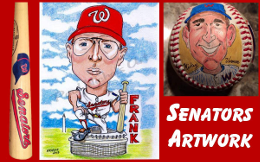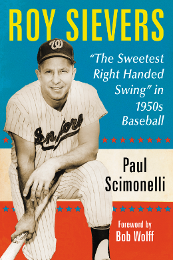By Jeff Stuart
“I can’t develop personal relationships with these guys. I gotta be able to trade ’em, send ’em down, sometimes cut them. Which is something you should learn to do, by the way. They’re professional ball players. Just be straight with them. No fluff, just facts. ‘Pete, I gotta let you go. Jack’s office will handle the details.’”
Billy Beane (Brad Pitt) assigning Peter Brand (Jonah Hill) the task of telling players they were traded released.
Moneyball
It was like a scene from Moneyball, With the signing of Denard Span and the resigning of LaRoche. Michael Morse had become expendable. But Mike Rizzo delivered the news himself when he returned Mike to Seattle on Jan. 16.
Yes, Baseball is a business. But Rizzo had developed a personal relationship with Morse, along with the fans.
This was a three way deal that returned A.J Cole to the Nationals system. Cole was key to the deal in which the Nats acquired Gio Gonzales from the A’s last winter. The Mariners sent catcher John Jaso to Oakland and Washington got minor leaguer Blake Teinen and a player to be named later from the A’s.
“I always thought that I could be a good player if I got an opportunity,”Morse told the Washington Post. “I got my opportunity here, and all the hard work and everything I’ve always done paid off. I finally felt like I fit in. I finally felt like I had a home.”
“I’m overjoyed. I’m excited,” Morse said. “It’s a great day for me and my family to just be in this situation. One of the biggest things I want to do, I want to thank the Lerner family for giving me the opportunity and making me into the player and person I’ve become. The one person that actually believed in me, Mike Rizzo, I can’t thank him enough.”
“We had such a great conversation,” Morse said. “We just talked like friends.”
Rizzo explained that he hated to see Morse leave, but that the Nationals had received a quality return.
In 2008, Michael Morse had the best batting average in the major leagues in spring training as a Mariner, batting .492. He earned a spot on the Seattle Roster. After playing only 5 games, he suffered a torn labrum diving for a ball against the Los Angeles Angels of Anaheim. He missed the rest of the season.
On June 28, 2009, he was traded to the Washington Nationals by the Mariners in exchange for Ryan Langerhans, an experienced, if unspectacular left handed hitter and outfielder.
Once healed, Morse was promoted to the majors by the Nats on August 21, after hitting .322 with 16 homers and 86 RBI in 110 minor league games.
In 2010 with the Nationals, Morse played 98 games and batted .289 with with 15 home runs and 41 RBIs.
Even as his offensive production rose, Morse never complained about his bench role, which changed into mostly an everyday role once Josh Willingham underwent season-ending surgery. When the Nationals signed Jayson Werth he knew he would have to give up his uniform No. 28. He didn’t mind that either. He chose 28 in the first place because of Werth, a player he admired.
In 2011 spring training, Morse, now wearing number “38” earned the starting left field spot, leading he Grapefruit League with nine home runs with 18 RBI. But he slumped badly when the season started. When he was replaced by Lance Nix in Left field on May 1st, he was batting just .211 But Mike got yet another “second” chance, taking over at first Base on May 22, when Adam LaRoche went out for the year, ironically, with a torn Labrum. He made the most of it, emerging as the Nationals’ best hitter. In his first four games at first base, Morse hit three home runs with eight RBI. From May 22 to July 5, Morse had 13 home runs and 35 RBI, the most in the majors in that span of time, earning him consideration with four others for the National League’s final roster spot in the 2011 All-Star Game.
His offensive numbers were better than Werth’s. He was the 2011 face of the franchise.
Morse finished the 2011 season with a .303 average, 31 home runs, and 95 RBI. He was fourth in the league in slugging percentage (.550).. A former “failed prospect’”, suspended for steroid use in the minors in 2002, had finally established himself in the majors at age 29.
When he his a home run in the final home game of the season he got a standing ovation and made a two handed fist pump curtain call.
“He worked hard and got comfortable at first,” Manager Davey Johnson said.
He committed no errors in over 110 chances at first base and made some great picks on throws in the dirt.
Adam Kilgore of the Post wrote: “Morse has played flawless defense at first base, handling every play and, according to Stats LLC, fielding every groundball hit in the first base zone. His best position these days is first base. Morse’s best play came Tuesday night, when he fielded a chopper from Ryan Howard to his left with a man on first and fired a smooth, accurate side-arm throw to second, starting a 3-5-1 double play. The throw reminded him of his shortstop days. “It was fun,” he said. His range in the outfield is a question, but he made the plays he could get to.”
The 6’5″, 230 lb. Morse played 50 games at shortstop in Seattle.
A lateral oblique injury sidelined Mike until June in 2012. His offense was sorely missed.
But numbers don’t tell you about Mike Morse. The “Beast”, a little goofy, at times, became a fan favorite. He will be when he returns to the field in Seattle. He plays the game with the enjoyment of a kid. He bridges the gap between team and fans. He lets us in.
There is his signature leg kick ritual before each at bat. “Like when a cobra’s about to strike, he coils up before he strikes,” Morse says. “The perfect swing for me starts with my base, starts with my legs, my hips,” Morse told the publication. “It’s like coiling like a snake. I call it my Samurai Cobra Snake. I do it right before I get into the box. And from doing that move, my little Cobra Snake, my weight is already in the back of my leg, my front of my leg is real light on the ground.”
So was his bobble head. That kick was immortalized for 15,000 lucky fans who bot the Mike Morse bobble head distributed on Sunday August 5.
Then there was the pantomime grand slam. On Sept. 29 in St. Louis.
The events leading up to the phantom home run were every bit as confusing as they were bizarre.
Morse hit a deep fly ball which appeared to bounce off the fence. The umps signaled that the ball was still in play, then Morse was tagged out, after rounding, first.
But the ball bounced off the back wall at Busch Stadium is actually out of play, so the umps reviewed and overturned the call and sent everyone back to their bases. Morse went all the way back to the batter’s box, pretended to swing the bat, then made his way around the bases. It was a grand slam.
But with Mike’s signature attached. Kilgore of the Post wrote at the time, “ Like, stuff like that doesn’t happen to Adam LaRoche.”
Then there was the showering of the outfield fans with beer following the clinching of the American League East title.
All along there were numerous pranks – shaving cream in the face- and more. For him pranks were an art form.
Following Mike’s return in June, shortstop Ian Desmond handed him — a custom made “Beast Mode” T-shirt. Morse began wearing it . “That was me,” he said, “I turned into the Beast.”
The beast slugged the club’s six longest home runs last season, according to the ESPN. including a466-foot bomb to Wrigley’s deep center field and a 455-foot blast at Nationals Park to the upper-deck of the opposite-field.
The fan singalongs to Aha’s “Take on Me” when Morse came to bat had become a Nationals tradition.
Often he rose to meet the moment.
Take on me (take on me)
Take me on (take on me)
I’ll be gone
In a day or two
So needless to say
I’m odds and ends
But I’ll Be
Stumbling away
Slowly learning that life is OK.
Well it has been a day or two and the Beast is gone. I will miss him. I will check his progress in Seattle now and then. I hope the Beast lives happily every after and maybe we will see him again down the road.







